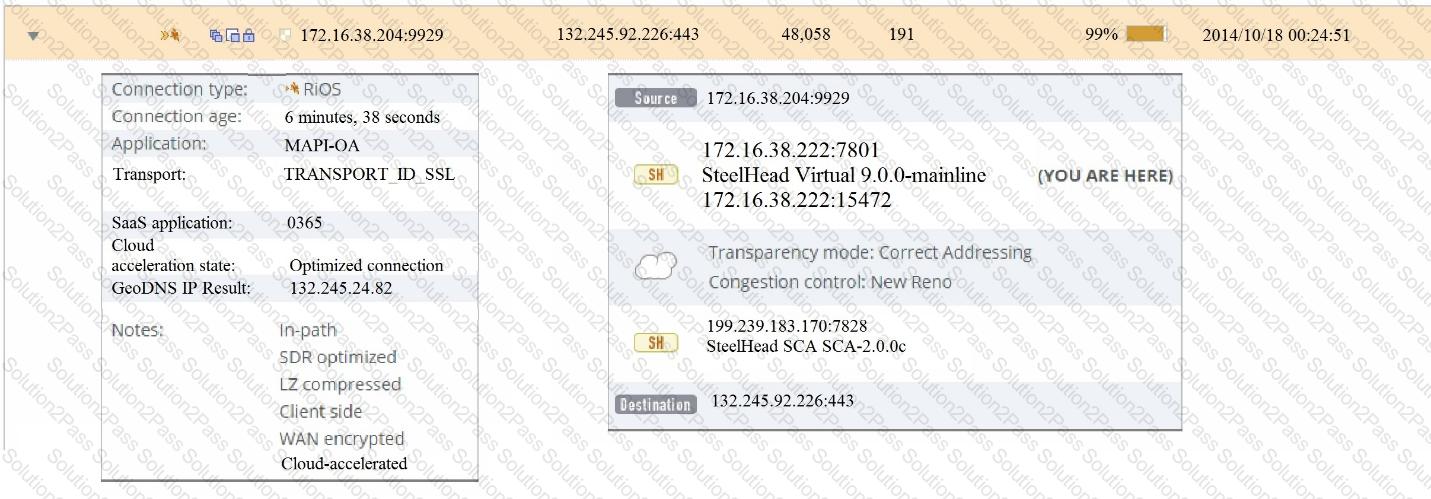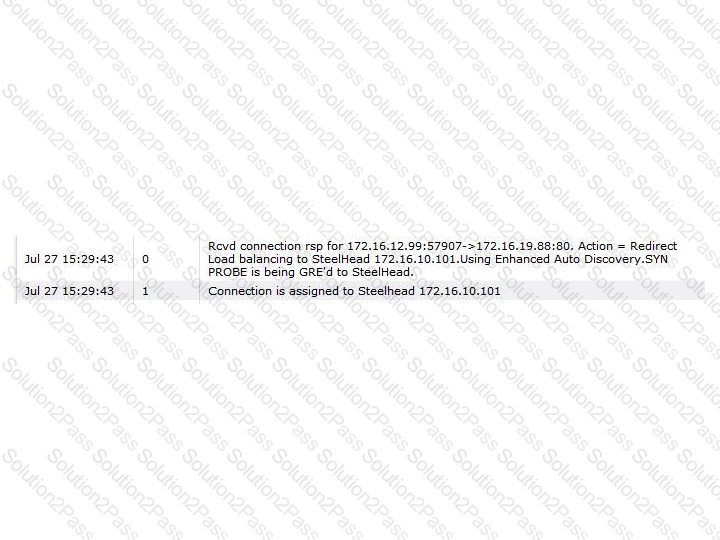830-01 Riverbed RCPE Certified Professional WAN Optimization Free Practice Exam Questions (2025 Updated)
Prepare effectively for your Riverbed 830-01 RCPE Certified Professional WAN Optimization certification with our extensive collection of free, high-quality practice questions. Each question is designed to mirror the actual exam format and objectives, complete with comprehensive answers and detailed explanations. Our materials are regularly updated for 2025, ensuring you have the most current resources to build confidence and succeed on your first attempt.
You plan to downgrade a SteelHead from RiOS v9.0.1 (Apr 17 2015) to 8.6.3 (Aug 7 2015). The appliance was previously running v8.6.3 but was factory reset after the upgrade. Will this be successful?
What is the first step in optimizing an SMTPS session?
Examine the diagram below. The customer needs to optimize data center servers and also servers within the DMZ but wants to keep the SteelHead behind the firewall. Which optimization mode would support this environment?

You wish to optimize SSL connections to an internal server. Where should the server certificate and private key be installed?
What do the log messages below mean?
Aug 30 18:19:27 SH pm[18716]: [pm.ERR]: Output from sport:
/opt/rbt/bin/sport (pid 11304) received signal 6 (SIGABRT) dumping core
You see errors such as the following in the SteelHead messages log “error=SMB_SHUTDOWN_ERR_SEC_SIG_ENABLED”. What do these indicate?
On the Interceptor appliance, connection tracing feature enables you:
Which is the default value for latency-based location awareness in a SteelHead Mobile policy?
You are troubleshooting a TCP connection that is not being optimized. On the Current Connections report, you expand the connection and see the pass-through reason is ‘Pre-existing connection’. Without restarting the oprimization service, how could you get this connection to optimize?
What configuration policies can be used on the SteelCentral Controller for SteelHead (SCC) for Interceptor deployments?
You have just completed upgrading the software version on your SteelCentral Controller for SteelHead Mobile. What will happen to the software on the SteelHead Mobile clients?
A customer uses a single URL for a service that uses many servers with different certificates. What SSL options should be enabled to enhance performance?
The picture below corresponds to a connection using the SteelHead SaaS GeoDNS feature. What is the IP address of the closest Microsoft Exchange Client Access Server (CAS)?

You plan to downgrade a SteelHead from RiOS v9.0.1 (Apr 17 2015) to 8.6.3 (Aug 7 2015). The appliance has not run v8.6.3 previously. Will this be successful?
MAPI optimization configuration should be applied.
SteelHead SaaS is configured using the default redirection port. Which statement correctly describes the configuration that must be applied to a firewall at the branch location?
-- Exhibit –

-- Exhibit --
Refer to the exhibit. A Steelhead administrator has decided to implement two Interceptor appliances and one Steelhead appliance on his data center. After configuring the Interceptor appliances, and the Steelhead appliance, he decided to check if the connections are being forwarded appropriately. Which Interceptor diagnostic tool did the administrator use?
-- Exhibit –

-- Exhibit --
Refer to the exhibit. A Steelhead administrator has recently decided to configure data store synchronization between 2 Steelhead appliances on his data center. After applying the configurations, he noticed that it is not working. According to the logs provided, what would you suggest would fix the problem?
While performing a health check for a Steelhead appliance at a remote site, you noticed some of the pass-through traffic should have been optimized. The pass-through reason for the suspicious traffic is "SYN on WAN side". Upon further investigating, you also noticed that all of the traffic initiated at the data center is pass-through while all of the traffic initiated at the remote site is optimized. There is only one path between the data center and the remote site and both Steelhead appliance are physically in-path. What are the possible causes? (Select 2)
Which deployment options are available to Virtual SteelHead on ESXi?
